Fiesler
Fi 156C
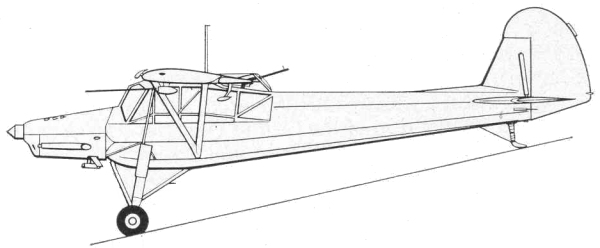
The Fiesler Fi 165 Storch was first built in 1939 and remained in production throughout the war and after. It was a fabric and steel tube constructed, three place liaison aircraft powered by an Argus AS-10C, inverted "V" air cooled eight cylinder engine. Used by all German forces during the war by Field Marshals and commanders to survey the battle lines during the conflict. It also played the major role in the rescue of the imprisoned Italian dictator Benito Mussolini. The Storch operated in the capacity of communications, observation, command, ambulance, rescue, VIP transport and agent insertion. This versatility made the Fi 156 a popular aircraft which was in constant demand over the entire German war front. Over 2,500 were built.
The Kit
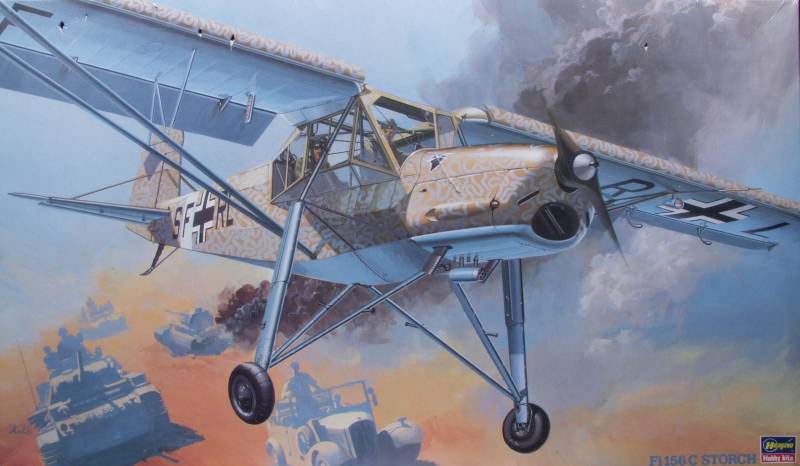
The Hasagawa kit has been around since 1979 and has been re released at least five times the last being in 2010. The kit I have was the third release from sometime around 1992 based on the date on the instruction sheet. While an older kit it has aged well and still looks current when built up. It is the only kit of this aircraft to be produced in 1/32.
The kit comes in a fairly large tray type top open box with a thin top and a thin corrugated bottom for strength. Inside the box are two large bags, one with the main airframe parts in it an the other with the smaller parts. Inserted in one of the bags was a smaller bag with the clear parts in it. The parts are molded in a light gray color. Since the aircraft was almost entirely fabric covered there are no panel lines. The only part that was metal was around the engine and the panels there are separate so they form their own panel lines. The fabric detail features rib tapes and a very restrained scallop on the wings and tail and only the slightest amount of scallop on the fuselage. The wings have separate leading edge slats as well as ailerons and flaps. The tail surfaces are all molded in the neutral position. The parts do have a bit of flash on them but it's all very thin and should be easy to clean up. Mold separation lines are light and this is important as much of the interior consists of a tubular construction and cleaning up heavy separation lines would have made the kit a bit of a drudge. The kit includes two figures, a seated pilot figure and a standing officer figure. They are nicely molded but in front and rear halves which means seams down both sides. Both figures have separate arms for posing and the pilot has a separate cap.
From a detail standpoint the cockpit is pretty spartan but then so was the real thing. There is some structure detail molded into the fuselage sides and also a couple ejector pin marks that need attention. The instrument panel looks nice with raised bezels and switches and the instruments have detailed faces. There are two five part seats, various wheels and cranks to attach to the side walls, stick, rudder pedals and a map case. The inside structure of tubes surrounds everything and there are some extra ammo cans for the rear facing machine gun. The engine is a small kit itself with separate cylinders, push rod tubes, oil pan, exhausts, intake manifolds, gearbox and accessories, engine bearers and fire wall. The aircraft comes with the standard stalky looking landing gear or skis if you so desire. The wheels are in halves with nice hub detail and are not weighted. Lets look at the parts.
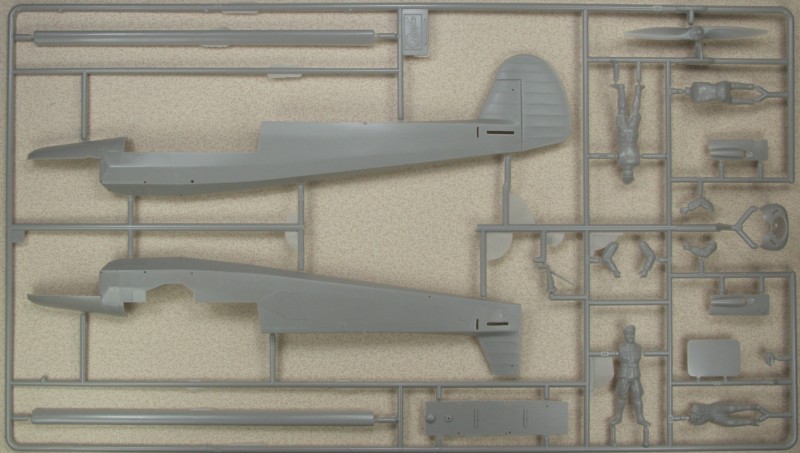
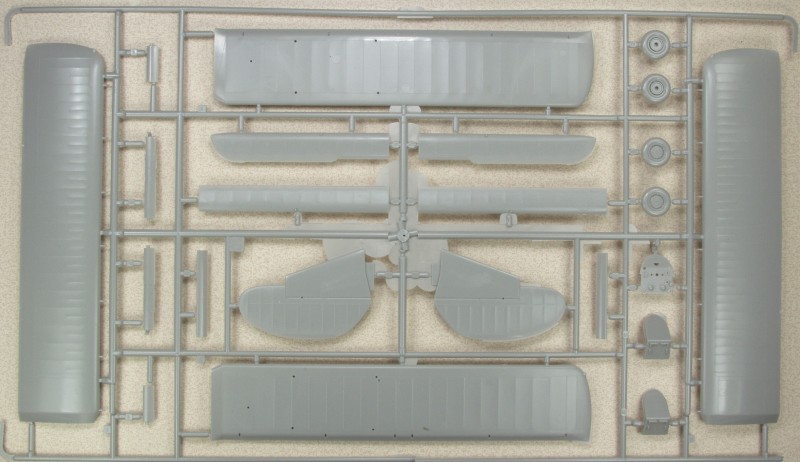
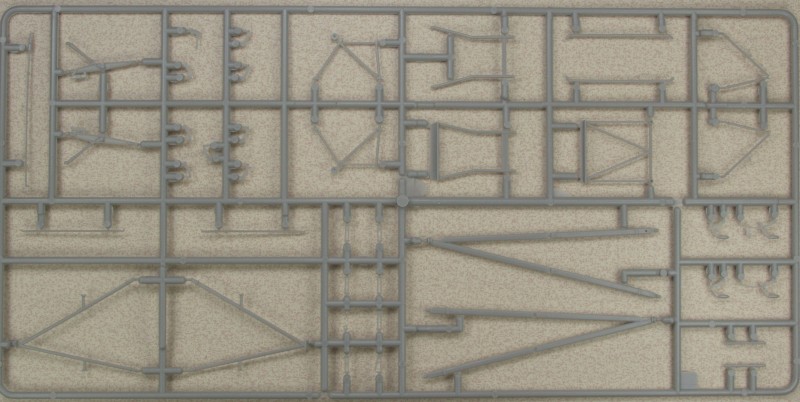
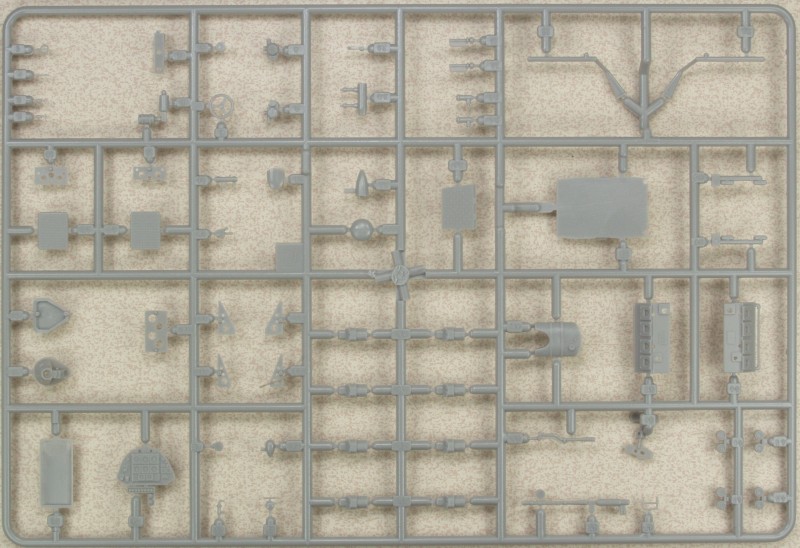
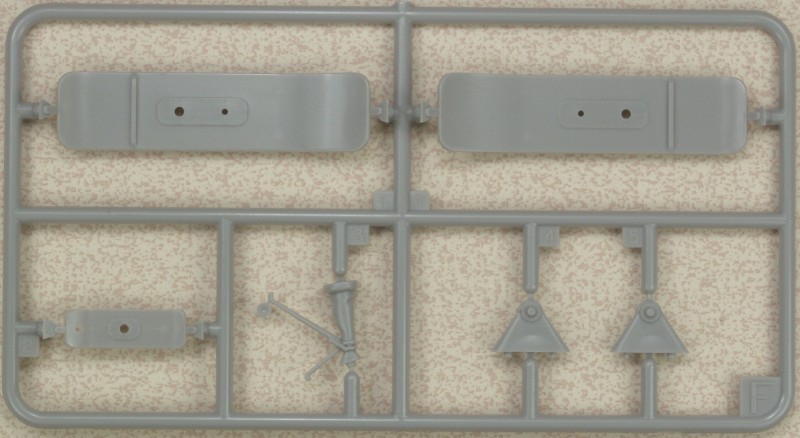
The clear parts are thin and crystal clear, a couple of mine had some scuff marks on them probably due to the large canopy breaking free of the sprue. The well defined frame lines should making masking easy.
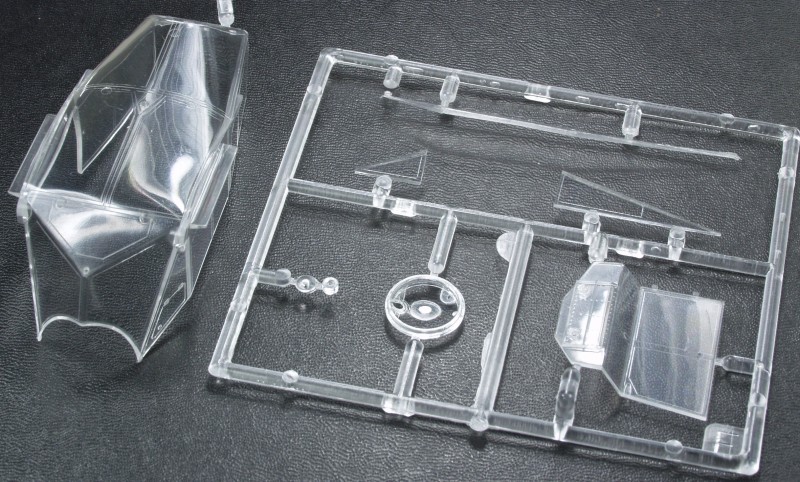
The decals are not as thin as some of the newer kits are but not as thick as a lot of Tamiya decals. They are in register and have a glossy finish. The white has either yellowed with age or is Hasegawa's version of white which is often more of a cream color. Because of their age it could be a bit of both. I could not find any after market decals for the kit but the national markings are the worst offenders here and they can be found from a variety of sources. The kit decals provide markings for three aircraft; one from North Africa in the spring of 1941; one from Russia in 1942 that can be painted in standard colors or white winter camouflage with skis; and one that was used in the rescue operation of Mussolini, Sept. 12, 1943, Italy.
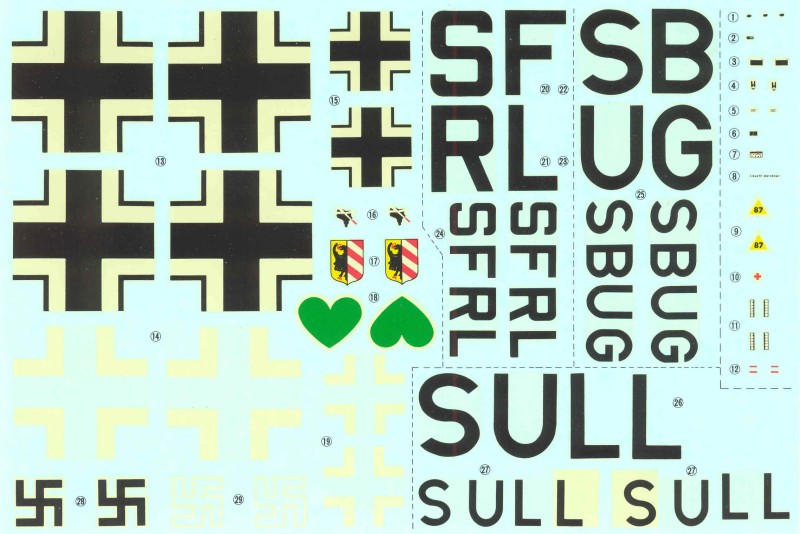
The instructions are a long sheet folded to form 8 panels. One panel of history, one with basic assembly techniques and a paint chart with Gunze numbers, one with a parts map, three with assembly diagrams divided in to 22 assembly steps and two with painting and marking diagrams.
After Market Goodies
Eduard made a photo etch set (32044) and a mask set (JX016) but I did not acquire the PE set.
Conclusions
Links to kit build or reviews
An in box review can be found here.
References
Fieseler Fi157 Storch 1938-1945 by Dariusz Karnes
Back to the 1/32 German Aircraft Page